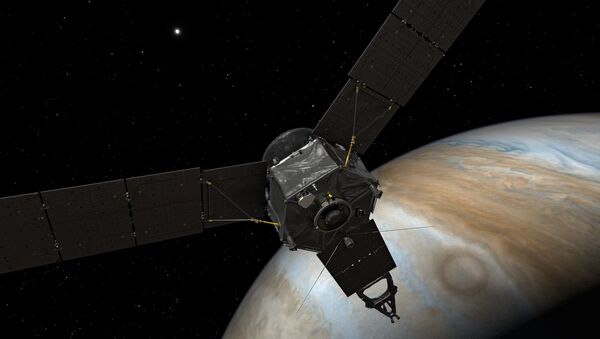"Juno exited safe mode as expected, is healthy and is responding to all our commands," Rick Nybakken, Juno project manager, from NASA’s Jet Propulsion Laboratory (JPL), said in a statement referring to the spacecraft’s unexpected shutdown last week.
"We anticipate we will be turning on the instruments in early November to get ready for our December flyby."
The spacecraft will make its closest approach to Jupiter December 9, snapping photos with its high-resolution camera.
"We are all excited and eagerly anticipating this next pass close to Jupiter," added Scott Bolton, principal investigator of Juno. "The science collected so far has been truly amazing."
Launching from Cape Canaveral in 2011, Juno is gathering scientific data on our Solar System’s largest planet. Entering Jupiter’s orbit in July, the spacecraft has spent the last two months calibrating its systems and performing the first steps in its mission.
"No other spacecraft has ever orbited Jupiter this closely, or over the poles in this fashion," Steve Levin of JPL said in August.
"This is our first opportunity and there are bound to be surprises. We need to take our time to make sure our conclusions are correct."
In August, Juno unveiled its first photo from Jupiter’s orbit, capturing the Great Red Spot, one of the planet’s most distinct features.
"This scene from JunoCam indicates it survived its first pass through Jupiter’s extreme radiation environment without any degradation and is ready to take on Jupiter," Bolton said in a statement released at the time.




